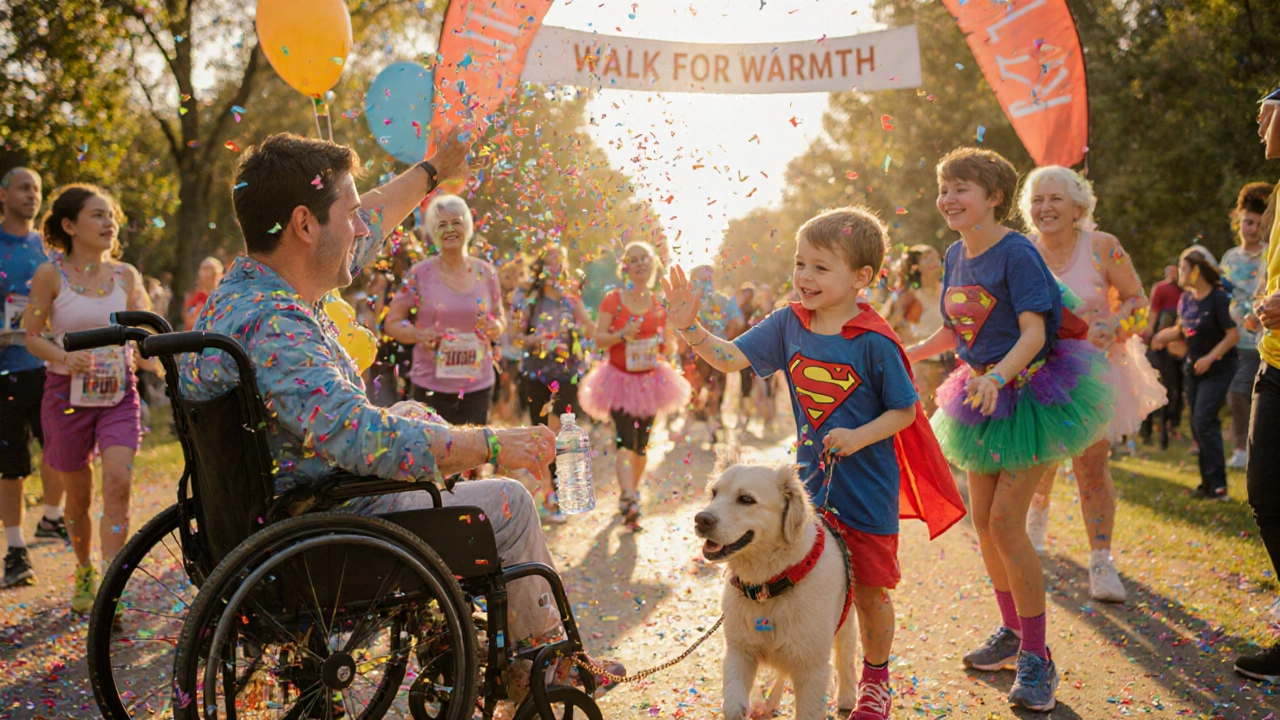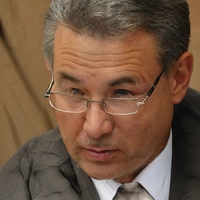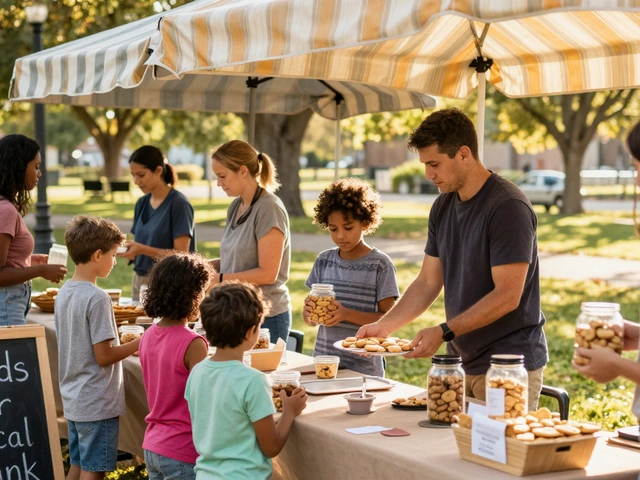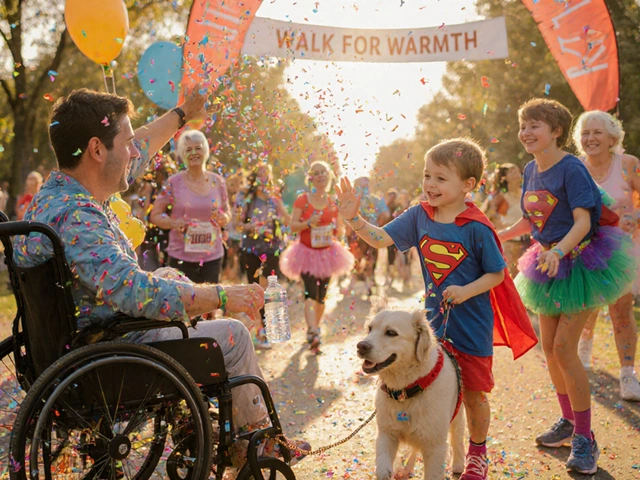Fun Run Fundraiser Calculator
Calculate Your Fundraising Impact
Estimate how much you could raise for your cause based on participant numbers and donation strategies.
Your Fundraising Impact
Your event can make a real difference! With participants, you're helping to:
• Provide school meals
• Buy warm blankets for seniors
• Support kids in your community
According to the article, events with 3x more participants than expected often see 3x more donations because of community connection.
A fun run fundraiser isn’t just a race. It’s a party in motion - a day where people lace up their sneakers, wear silly costumes, and move their bodies to raise money for something that matters. You don’t need to be fast. You don’t even need to run. Walk, jog, dance, push a stroller - it doesn’t matter. What matters is that you show up, and that you help make a difference.
How a Fun Run Fundraiser Works
At its core, a fun run fundraiser is a community event built around movement and giving. Organizers pick a cause - maybe it’s feeding local families, supporting a school’s art program, or funding a new playground. Then they set a date, pick a route (usually 5K or less), and open registration to the public.
People sign up for a small fee - often $20 to $40 - and that money goes straight to the cause. Some events add extra ways to raise cash: participants can create personal fundraising pages, ask friends to sponsor them, or sell raffle tickets. Local businesses often chip in too, donating snacks, T-shirts, or cash prizes. The goal? Get as many people as possible involved, not to crown the fastest runner.
Unlike competitive races, fun runs don’t time you. There are no qualifying times. No medals for first place. Instead, you get a colorful T-shirt, a free smoothie, and the satisfaction of knowing your step helped someone else.
Why Fun Runs Work So Well
People don’t give money because they feel guilty. They give because they feel connected. A fun run turns charity from a distant idea into something you can touch, feel, and be part of.
Think about it: if someone asks you to donate $50 to a shelter, you might hesitate. But if you’re invited to run (or walk) 5K with your neighbor, your kid’s teacher, and the local firefighter - and you know every dollar you raise helps kids get warm meals - suddenly, it feels personal. You’re not just writing a check. You’re showing up.
Studies from the American Heart Association show that people who participate in community health events are 3x more likely to keep donating to the cause than those who just write checks. Why? Because they’ve built a memory around it. They remember the music, the balloons, the kids laughing as they crossed the finish line. That’s the power of experience over obligation.
Who Organizes These Events?
You’d be surprised who runs these. Often, it’s not big nonprofits - it’s small groups with big hearts. A PTA parent. A local yoga studio owner. A group of high school students. A church choir. Even a single person with a Facebook page and a dream can start one.
In Wellington, a teacher named Mara started a fun run after her school lost its music funding. She posted a flyer at the grocery store. Got 12 sign-ups the first week. By month three, 400 people showed up. They raised $28,000. Now it’s an annual event. No fancy marketing. No PR team. Just a simple idea and a lot of neighbors showing up.
Big charities like the Red Cross or cancer foundations run fun runs too - but the real magic happens in small towns and neighborhoods where the money stays local and the impact is visible.
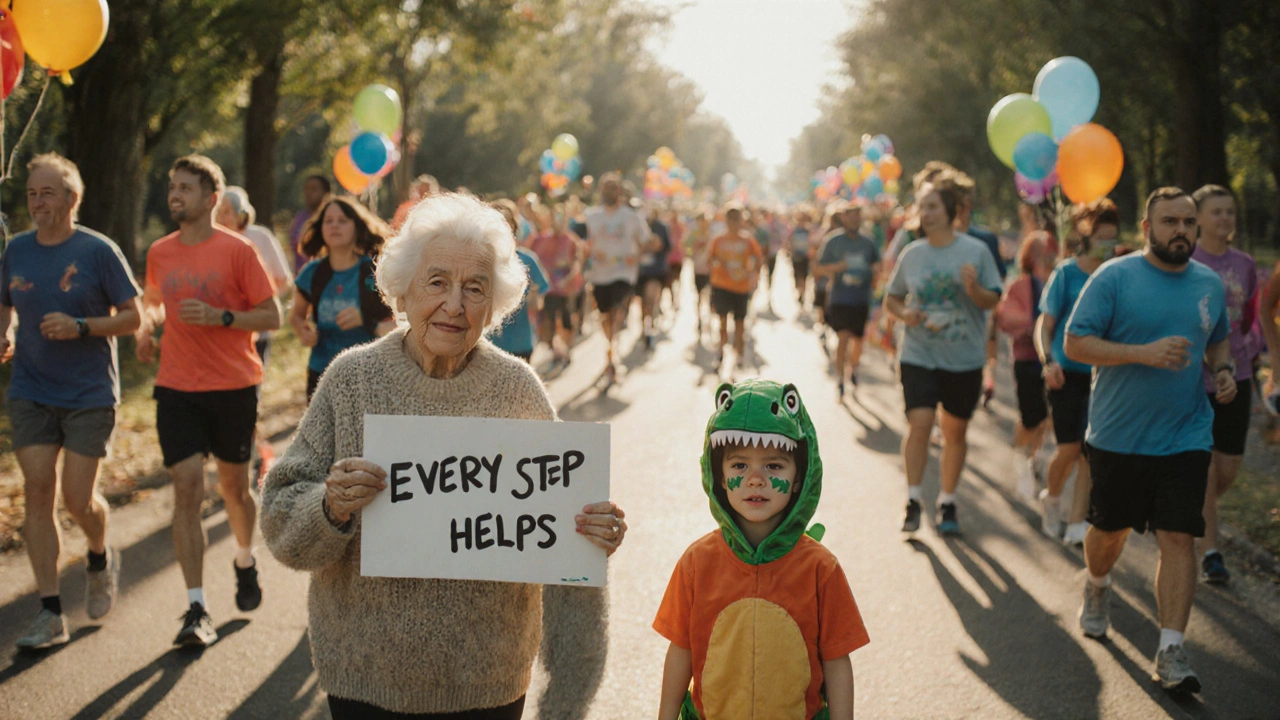
What Makes a Fun Run Successful?
It’s not about how much money you raise. It’s about how many people you bring together.
Here’s what actually works:
- Keep it simple. One route. One start time. One goal. No complicated rules.
- Make it festive. Music. Face painting. Photo booths. Free water stations. A DJ who plays 90s hits. People remember the vibe, not the distance.
- Invite everyone. Kids, seniors, strollers, wheelchairs, dogs on leashes - all welcome. The more diverse the crowd, the stronger the message.
- Use free tools. Platforms like JustGiving, GoFundMe, or Eventbrite handle registration and donations without charging high fees. Avoid platforms that take more than 5%.
- Follow up. Send a thank-you email with photos. Show people exactly what their money bought. “Your $30 paid for 120 meals.” That kind of detail turns one-time participants into repeat supporters.
One group in Dunedin raised $15,000 for a youth mental health program. They didn’t have sponsors. They didn’t have a big team. They just sent out 500 emails to local families, put up 20 flyers at the library, and showed up with a Bluetooth speaker and a big banner that said, “Walk for Peace.” They had 800 people. That’s the power of a simple, clear mission.
Common Mistakes to Avoid
Not every fun run succeeds. Here’s what usually goes wrong:
- Too much focus on fundraising goals. If you start saying, “We need $50,000!” people feel pressured. Instead, say, “Every step helps.”
- Ignoring accessibility. If your route has steep hills, no restrooms, or no shade, you’re turning away half your potential crowd.
- Forgetting the after-party. People show up for the fun. They stay because of the community. End with snacks, music, or a short speech from someone who benefited from the cause.
- Not promoting locally. Don’t rely on social media alone. Talk to the local radio station. Ask the supermarket to put up a poster. Call the community center. Word of mouth still works.
One event in Tauranga lost 60% of its turnout because they didn’t check the weather forecast. It rained. No tents. No ponchos. No backup plan. People left. The next year, they had umbrellas, waterproof T-shirts, and a tent with hot cocoa. Attendance doubled.
How to Get Started
If you’re thinking about starting one, here’s how to begin - no experience needed:
- Pick a cause. What matters to you? Your school? The animal shelter? A neighbor with cancer? Start there.
- Find 2-3 helpers. You don’t need a team of 20. Just a friend who can handle signs, another who can manage online registration, and someone who knows how to use a speaker.
- Choose a date and route. Pick a weekend. Pick a park, a beach, a quiet street. Keep it under 5K. Make sure it’s safe and legal.
- Set a registration fee. $20-$30 is common. Offer free entry for kids under 12.
- Use a free platform. Go to JustGiving or Eventbrite. Set up a page. Share the link everywhere.
- Start promoting. Post on Facebook groups. Talk to your local café. Ask the library to put up a flyer. Tell your neighbors.
- Plan the day. Music. Water. T-shirts. Snacks. Volunteers with clipboards. A photo booth. A thank-you sign.
- Follow up. After the event, send photos and a short video. Say thank you. Tell people what happened because of them.
You don’t need a budget. You don’t need permits right away - many towns allow small community events without them. Start small. Learn. Grow.
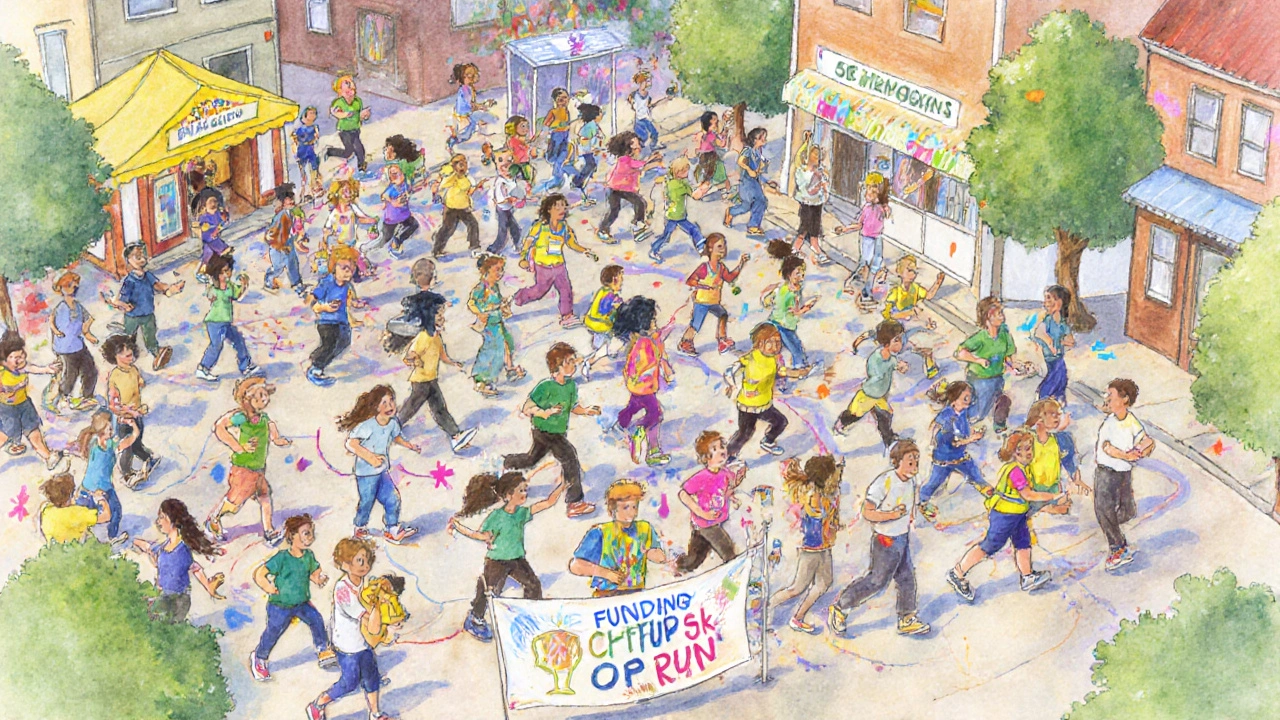
Real Impact, Real Stories
In 2023, a group of retirees in Nelson organized a “Walk for Warmth.” They raised $12,000 to buy electric blankets for elderly people who couldn’t afford heating. The next year, they had 300 walkers. One participant, 84-year-old Joyce, walked the whole route with her walker. She said, “I used to be cold at night. Now I know someone’s thinking of me.”
That’s what a fun run fundraiser does. It doesn’t just raise money. It builds bridges. It reminds people they’re not alone. It turns strangers into neighbors.
What Happens After the Run?
The real work starts after the finish line.
Organizers need to track donations, send receipts, and report where the money went. Be transparent. Post a simple update: “Thanks to you, we bought 500 school lunches. Here’s a photo of the kids eating them.”
Don’t just vanish after the event. People who showed up once will come back - if they feel seen. Send a thank-you note. Invite them to next year’s event. Make them feel like part of the story.
Some fun runs become traditions. The “Puppy Trot” in Christchurch started in 2018 with 80 people. Now it’s the biggest community event in the city, with 1,200 walkers and 200 dogs. Why? Because it’s not just a fundraiser. It’s a family reunion.
Final Thought: You Don’t Need to Be Perfect
You don’t need a marketing degree. You don’t need a big budget. You don’t even need to be athletic.
You just need to care enough to start. One person. One idea. One day. One step.
That’s how fun run fundraisers change communities. Not with grand speeches. Not with big sponsors. But with ordinary people doing something ordinary - walking, running, laughing - together.
Do I have to run to participate in a fun run fundraiser?
No. Fun runs are designed for everyone - walkers, stroller-pushers, wheelchair users, kids, seniors. You don’t have to run. You just have to show up. Many people walk the whole route, and that’s perfectly fine.
How much money can a fun run fundraiser raise?
It depends on size and planning. A small local event with 100 people might raise $2,000-$5,000. A well-organized community event with 500+ participants can raise $20,000 or more. Some events also add extra fundraising like raffles or sponsorships, which can double the total.
Are fun run fundraisers expensive to organize?
Not at all. Many start with under $500. Costs usually include T-shirts, permits (if needed), water, and a speaker. Most organizers use free tools like Eventbrite for registration and JustGiving for donations. Local businesses often donate snacks or printing, cutting costs even more.
Can I do a fun run fundraiser on my own?
Yes. Many of the most successful fun runs started with one person. You’ll need at least one or two helpers for setup and registration, but you don’t need a team. Use free online tools, post on local Facebook groups, and talk to neighbors. Start small - even 30 people can make a big difference.
What’s the best distance for a fun run?
A 5K (3.1 miles) is the most common because it’s challenging enough to feel like an achievement but short enough for almost anyone to complete. Some events offer a 1K or 2K option for younger kids or those who prefer a shorter route. The goal isn’t speed - it’s participation.
How do I make sure my fun run is safe?
Plan your route carefully - avoid busy roads, choose well-lit areas, and check for accessibility. Have volunteers at key points. Provide water and first aid. Let local authorities know about the event if it’s on public land. Most small events don’t need permits, but always check your town’s rules. Weather matters too - have a backup plan for rain or extreme heat.
